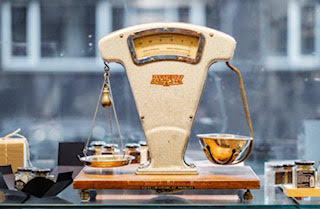I was recently interviewed by Bottom Line Health about my work on portion sizes. Portion distortion makes it far too easy to overeat. In the interview, I share 3 quick tricks to overcome it.
You can read the full piece HERE which was also published in the October 2022 issue (cover story.)
I share some excerpts below:
“Pop quiz time: You purchased a 3-ounce bag of potato chips. Its small size and mouth-watering flavor make it seem perfect for a quick snack. Within five minutes, the bag has been devoured. How many servings of chips did you just consume?
The answer probably isn’t what you think. A serving of potato chips is one ounce, or about 12 chips. That “snack-sized” bag actually contained enough chips for three adults, which means you consumed three times as many calories, grams of saturated fat, and milligrams of salt as you likely intended.
Portions are growing
Today’s portion sizes of ultra-processed foods (such as chips, fast food, sodas, ice cream, and candy) are up to five times larger than they were when first introduced to market. For instance, the original Coca-Cola bottle was 6.5 ounces. Today, it’s available in six different sizes—all marketed as single servings—ranging from 7.5 ounces to 24 ounces. And when Hershey’s came out with its first chocolate bar in 1908, it weighed one-half of an ounce—the same size as today’s fun-size Halloween candy bar.
Consumers are drawn to these foods, which have been engineered using sugar, salt, fat, and other palate-pleasing ingredients to keep us craving more, lighting up the reward centers of the brain, similar to how illegal drugs work.
Older adults may like them the most: In a new American Journal of Clinical Nutrition study, researchers analyzed data from nearly 41,000 U.S. adults and found that those ages 60 and older showed the sharpest rise in ultra-processed food consumption—more so than college students.
Big portions contain more calories than small portions, plus we tend to eat more food when given larger sizes. (I call this “eating with our eyes” instead of “eating with our stomachs.”) This is a major reason why 74 percent of U.S. adults are overweight or have obesity, placing them at higher risk for other diet-related conditions such as heart disease and diabetes.
Portions versus servings
One of the problems lies in the fact that our notion of a proper serving has been distorted beyond recognition by super-sized fries and 1,000-calorie smoothies. When a restaurant server brings us an enormous plate of pasta, we consider it to be an individual serving when, in fact, what we’ve been given is a portion. They’re not the same thing…
…
As for those tasty, addictive ultra-processed sweets and treats, there’s still room for them at the table, but be choosy and rein in the portions.
Portion hack #1: Buy big bags, and then portion them out at home.
It’s human nature to eat more out of a large bag than a single-serving one. But single-serving packages of food, whether it’s ultra-processed (like chips or candy) or healthy (almonds or baby carrots) cost more, so people tend to go for the bulk sizes.
That’s fine, just portion the snacks out once you get home, keeping serving sizes in mind. Check the nutrition label and make sure it lists a single serving size. Most candies and chips will specify how many pieces per serving (for example, 12 peanut M&Ms or 17 pretzel twists.) If you’re still hungry, supplement your snack with a fruit or veggie.
Read the full piece HERE for additional portion hacks…
Lisa
Lisa R. Young, PhD, RDN
Would you like help cultivating healthier habits? managing your portions? eating and living more mindfully? incorporating more healthy plant-based meals? … and tips for eating a little better? I’m happy to assist. I currently have a few openings for VIRTUAL NUTRITION COACHING & COUNSELING. I can reached HERE to discuss your unique needs and set up a free 15-minute discovery call.⠀





 Favorite fall foods to boost your health and your taste buds.
Favorite fall foods to boost your health and your taste buds.